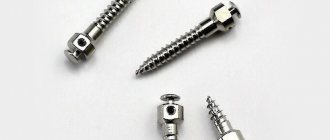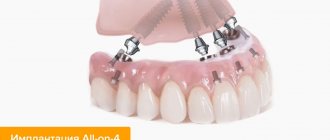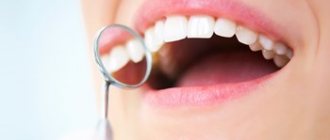A child’s first tooth erupts is a joyful event for parents. But what if there are no teeth at 6 or 8 months or even later? Is this really a problem or can it wait?
Milk teeth: by the age of 2–2.5 years, exactly 20 of them should grow
Sometimes the replacement of teeth with permanent ones is delayed, so sometimes an examination may be required to determine whether everything is in order.
Why may teeth not grow on time?
Individual characteristics
The average time for the appearance of the first baby tooth is 6 months, but teeth can begin to erupt at three months or a year, and both options are normal. If the child’s teeth do not appear, but there are no other complaints and the pediatrician does not notice any problems, then there is no need to worry until the child is a year or more old.
The same applies to the late beginning of the change of milk teeth to permanent ones. For some children, permanent incisors begin to appear already in the senior group of kindergarten, while others experience this moment at school. The normal period for the formation of a permanent bite is from 7 to 13 years.
Later than the average period, teeth may erupt in weakened, often ill children.
What to do?
Monitor other complaints, contact doctors if necessary, and if there are no complaints, then nothing. You cannot influence the rate at which teeth appear.
How many teeth does a 9 month old baby have?
Babies cut their first teeth - the lower front incisors - at the age of 6-8 months. After 1-2 months, two opposing upper incisors will appear. This is an accepted norm, but only approximate. Some babies are born with teeth, while others join the ranks of teethers only at 12-15 months.
Be that as it may, sooner or later the first tooth will come out, followed by the rest, and the mother needs to be prepared for her child’s red and swollen gums, poor sleep, whims and loss of appetite - these are the most common symptoms of teething. You can alleviate the unpleasant sensations: you definitely need to give the baby something to chew on - a teether, a bagel or an apple.
Partial edentia
Adentia is the congenital absence of tooth buds. Most often, the top two “twos” are missing. Moreover, there may be a lack of both milk and permanent teeth, or both.
Adentia is a congenital condition; it occurs due to a malfunction in the embryonic period during the formation of the main organs and systems.
It is very difficult to notice partial edentia of baby teeth: the teeth are small, they are all of a similar shape, and others take the place of the missing ones. Such adentia does not harm the chewing process in any way.
If permanent teeth are missing, this is already noticeable visually. In this case, malocclusion may develop, since the “threes” are pulled up to replace the missing “twos”, and the following teeth are also displaced.
Partial edentia - absence of upper incisors
Partial edentia - there are no upper incisors, but “threes” have taken their place
The exception is wisdom teeth, also known as “eights.” Their functions are not so important; in most people they remain impacted, and if they are lost, they are not replaced with prosthetics. Their absence does not affect the health and aesthetics of the smile.
What to do?
If there is a partial lack of permanent teeth, it is most often necessary to correct the bite and prepare a place for prosthetics. If you do not make dentures, but cover the empty space with neighboring teeth, then this will not be a complete solution to the problem - the dentition will be narrower than it should have been.
Experts' opinion
Doctors assure that it is absolutely normal that babies start teething at about one and a half to two years. Moreover, not all experts are of the opinion that the later appearance of teeth is directly related to childhood rickets. Today there are quite a lot of babies with absolutely normal development, but their teeth did not appear so early.
To eliminate the possibility that the baby will not have teeth at the age of nine months, it is better for mothers to prepare for pregnancy in advance. They need to cure their existing illnesses and take care not to get sick while waiting for the baby. You should also forget about your bad habits, eat right and follow a daily routine.
Completely edentulous
This is a rare phenomenon - the complete absence of tooth buds (deciduous or permanent). In this case, teeth cannot erupt because they are simply not in the jaw bone.
Complete edentia in the picture
In medicine, cases have been described when a patient had milk teeth, but permanent teeth were completely absent. The loss of baby teeth was timely, but permanent teeth did not appear in return. At this moment, the child’s parents paid attention to the problem, and the dentist made a diagnosis.
In addition to congenital, adentia can be acquired if the child has undergone severe treatment (chemotherapy) at an early age. Due to the toxic effects of drugs, tooth buds may be damaged.
What to do?
Edentia is clearly visible on a CT image. If such a diagnosis is made, the only option is complete prosthetics. Since the case is rare, the question of when to get dentures and in what way should be decided individually.
If you do not replace missing teeth with prosthetics, the chewing process cannot be complete. Even the lack of 2-3 teeth affects digestion. Bone tissue, if the jaws do not receive enough load when chewing, undergoes resorption (resorption), and this leads to weakening and loosening of the remaining teeth, increasing the risk of periodontal disease.
Therefore, if you have any complaints about your child’s teething being too slow, you should consult a doctor. In most cases, it turns out that there is no pathology, all teeth are fine and will grow a little later. But in rare cases, prosthetics may be required, which is better to know in advance. Then you can schedule treatment on time.
Other articles:
If a child does not want to be treated by an orthodontist...
When should your child see an orthodontist?
How to help your child not be afraid of dentists
When and how do the first teeth appear?
According to all existing rules, the first baby tooth grows by 6 - 8 months of age. Quite often, the two lower front teeth begin to erupt at the same time. Then there are the same upper ones, and there are also two of them. By their first birthday, toddlers have approximately eight or more teeth. But this is not always the case.
Not all children develop equally. It is not at all necessary that the development of each child is in accordance with accepted norms or standards.
If your child is 9 months old and has no teeth, there is no need to panic. Some babies get teeth at four to five months. This is especially true for those who are bottle-fed. In breastfed babies, they appear closer to one year.
The reasons for this are different. These include the toddler’s nutrition and hereditary predisposition. For example, infant formula and cereals contain a large amount of vitamins and minerals, a complex of other vital elements for the development of children, which has a significant impact on tooth growth. If teeth erupt by the age of one year or a little later, experts reassuringly say that there is no need to worry.
How to eliminate teething problems?
To ensure that your baby does not have any disorders, it is important to think about the future newborn even when planning a pregnancy. Therefore, prepare for this systematically.
- Treat your teeth in advance, eat right, take vitamins, and do not limit yourself in consuming foods rich in calcium.
- Get outside more often, make sure you have normal hemoglobin.
- Do not drink strong drinks or smoke under any circumstances.
- Do not self-medicate, do not take medications that your doctor has not prescribed to you.
After childbirth:
- Make sure your baby gets adequate nutrition
- strengthen your baby, take daily walks
- Contact your pediatrician promptly if you notice any changes in your child’s health.
- take care of your child's hygiene
IMPORTANT: Monitor your baby’s immune system as a whole. Diseases may cause teething problems.
Treatment of adentia in adults
Adult patients are offered various types of removable and fixed dentures. Prosthetics on implants, installation of bridges on four implants and other prosthetic options at the patient’s choice are possible. Depending on the condition of his dental system, financial capabilities and wishes, dentists, as a rule, offer several treatment options to choose from.
When choosing a treatment method, it is important to understand the features of each design. The doctor, based on the condition of the patient’s oral cavity, offers him a choice of several prosthetic options.
Removable dentures
Partial or complete dentures should be replaced every 1.5 to 2 years. Therefore, even with complete loss of teeth, dentists offer an alternative type of prosthetics based on implants.
Clasp dentures
Dentures on a metal frame, on which an acrylic base is installed, and artificial teeth are installed on it. This solution makes it possible to significantly lighten the design of the prosthesis, making it thinner and more comfortable.
Bridges
In case of partial edentia, it is possible to install bridges. The non-removable structure is fixed on adjacent non-grindable teeth.
Implant-supported prosthetics
Implant-supported prosthetics are considered the most reliable and aesthetic way to restore dentition. The main advantages of this type of bone implantation include:
- long service life of the structure;
- aesthetic appearance;
- no need to grind adjacent teeth.
A denture installed on implants completely replaces missing teeth and performs a functional and aesthetic task.
Examination and treatment
If a child has no teeth at 10–12 months, the pediatrician may prescribe an examination to determine the reasons for the delay. A panoramic x-ray shows whether there are baby tooth buds in the child's jaw. In case of partial edentia, specific treatment is prescribed to allow the embryos of permanent teeth to develop correctly. To ensure that the jaw is formed correctly and food is chewed efficiently, special removable dentures are made to compensate for missing baby teeth for a 3-year-old child.
The doctor may prescribe an ultrasound scan of the abdominal organs, blood tests, stool tests, urine tests of the child and others, if necessary. Vitamins and minerals are prescribed to strengthen the immune system, primarily vitamin D and calcium. The child should spend as much time as possible outdoors. He is given ring toys as a stimulant. A light massage of the gums with a clean finger is helpful.
Parents should be alerted if the incisors erupt too early, before 3 months. In some cases, this may indicate disorders in the endocrine system, but more often than not, early teething in children is an individual feature.
Before appearing from the outside, the incisor passes through the bone tissue surrounding it, and then through the mucous membrane of the gums. Do I need help with teething? Trying to speed up the process of its appearance with a piece of sugar, a spoon or other objects, you can damage the gums and introduce an infection into it.
According to a good ancient tradition, the one who discovers the child’s first tooth gives him a silver spoon. It is believed that she will bring him health and wealth. She can lightly tap the tooth and make sure that it has erupted and all anxious expectations are left behind.
When should you see a doctor?
Teething causes a lot of discomfort for the baby. This does not require medical attention. But there are situations when you cannot do without the help of a doctor. You should contact him in the following cases:
- Painful cough.
- The temperature does not subside for a long time.
- There is mucus and blood in the stool.
- Diarrhea
- and purulent nasal discharge.
- Constipation.
- Mouth ulcers.
- Unnatural color of the shoots.
Symptoms from teething hide the manifestation of diseases, for example, ARVI or infectious diseases. It is important to consult a doctor if negative symptoms occur. Exercise caution in such cases rather than regret later what you didn’t do.
How a dentist can help
If you are not ready to wait a year, seek help from a good pediatric dentist. The specialist will take an X-ray of the jaw to ensure the presence of tooth buds. If everything is fine, all you have to do is calmly wait for the process to begin - gum enlargement and increased salivation. Now it's time to help the baby:
- a ring stimulator will moderate itching, reduce discomfort and speed up teething;
- You can gently massage your child’s gums with a clean finger or a small spoon;
- stimulates tooth growth and fortified complementary foods - healthy juices and purees. While there are no teeth, solid complementary foods cannot be introduced.
This is interesting: What is a fistula on the gum: causes, what it looks like (photo)
If your health is fine
The timing of eruption depends on heredity, including grandparents, and on external factors. It is believed that in hot climates, teeth appear earlier, as early as 4 months. When a child is healthy and his development corresponds to his age, but there are still no teeth, although they should already appear in accordance with average standards, this causes concern among parents. Modern doctors indicate only approximate dates for the sequence of growth of the first teeth. The standard teething pattern looks like this: from 5–6 months - on each jaw there are 2 central incisors (first from below, then from above), from 8 months - lateral incisors, by the year the child has only 8 teeth. They are known to appear in pairs and alternately on both sides.
What to do if a child has only grown one tooth and there are no signs of a second one? You need to know that the sequence of teething may be different and this is not considered an anomaly. There are many options for their appearance. At seven months they can erupt 2 - from below, then 1 - from above, then the third and fourth - in the bottom row, and only after them the missing top one.
Many mothers tend to associate the whims of a 3-4 month old child, poor sleep or appetite with the imminent appearance of the first incisors. There is no doubt left if the baby also puts everything into his mouth and drools profusely. Sometimes it seems to mothers that the gums are already red; they look into the child’s mouth in the hope of seeing that swollen white ball from which the long-awaited tooth is about to emerge. But days and weeks pass, the child is already 7 months old, and there are no teeth? No need to panic.
If the baby’s health is fine, you just need to wait, especially since all the dates are individual and there may be deviations in one direction or another for six months. Some children have their first incisors at 4 months, while other babies can already walk by the time they begin to emerge.
Let's talk about the reasons for the delayed development
So, one of the problems for many parents is the fact that the child is 9 months old and has no teeth. There may be more than one reason for this; the following factors must be taken into account.
1. Mom's health. During pregnancy, the woman could have had problems in her body (lack of minerals, vitamins, toxicosis, she experienced stress), which had an impact on the appearance of teeth in the toddler.
2. Heredity factor. It may turn out that mom, dad, or even a distant relative started teething quite late.
3. Age of the baby's parents. There is an opinion that the younger the mother and father, the later their baby’s teeth will appear.
4. Gender. In many developmental indicators, boys lag behind girls, so their teeth may begin to erupt much later than expected.
5. There are not enough mineral components in the baby’s body for its full development and growth. In particular, fluoride, calcium and vitamins A, E, D, B.
6. If the mother did not give up bad habits while waiting for the baby, this could well affect the baby’s health, including dental health.
7. Date of birth of the baby - there is an opinion that premature babies develop teeth a little later.
8. Childhood diseases. It is necessary to establish what the baby was sick with in the first months of life. After all, at this time enamel and dentin are formed, and due to some diseases their growth may slow down.
9. Climate conditions. If the baby grows in a mild, warm climate, this will contribute to early dentition.
10. If there is a pronounced calcium deficiency in the child’s body, the baby may develop rickets. With this disease, the process of bone formation is disrupted, and an insufficient amount of minerals enters them.
11. The body of each toddler has individual characteristics.
Each of these reasons should be promptly addressed.
What about the deadlines?
Some parents use a special formula to determine how many teeth a baby should have at nine months. It looks like this:
K=M – 4,
where K will be equal to the number of teeth, and M will be the number of months of the toddler’s life.
But even if teething begins only at one year, parents should not panic. This is also the norm.
Children's teeth may appear one at a time or in pairs. Moreover, in this way not only the first ones erupt, but also those following them. There are cases when a baby has as many as four teeth coming out at the same time. By the way, massive teething will affect the timing.
It is human nature to doubt. Especially for parents of little ones. It often happens that a child is 9 months old and has no teeth. Why? If at this age or even a year the baby does not have a single tooth, you should consult a doctor to make sure that the little one does not have rickets or hypothyroidism.
Typically, the first twenty teeth should appear before two and a half to three years of age. Each baby’s jaw should have four incisors, two canines (also called canines) and four molars. In an adult, it is considered normal to have twenty-eight or thirty-two teeth - on each jaw there are 4 incisors, two canines, four premolars and from four to six molars.
When baby teeth begin to emerge, there are initially no gaps between them. This is normal. A little later, when the child’s jaw grows, by the age of four the teeth begin to diverge and gaps form between them. This process is necessary to accommodate the molars because they are much larger than baby teeth. If such gaps do not appear, then subsequently the molars will not be able to fit in and will grow crookedly.











